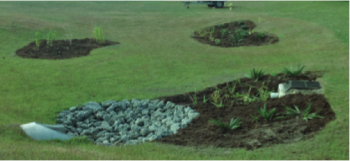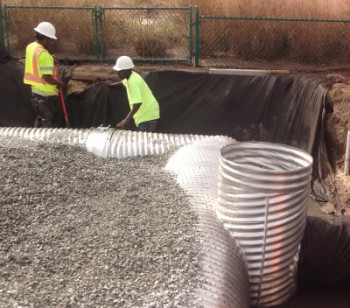
Existing turf areas within the Town of Wrightsville Beach are repurposed into garden areas that feature native plantings, and capture polluted stormwater before it reaches the adjacent recreational waters.
The Coastal Federation led a collaborative effort with the Town of Wrightsville Beach, the City of Wilmington, N.C. Department of Transportation, and UNC Wilmington to reduce the volume of stormwater runoff flowing into Bradley and Hewletts Creeks. If the runoff doesn’t enter the creeks, the contaminants it contains won’t enter either. This keeps the water clean and healthy for fishing and swimming.

The Iula street project disconnects street drains carrying polluted stormwater directly into Banks Channel, and allows the water to instead be held and slowly filtered into the sandy soils on the property.
By late 2014, the construction of six stormwater reduction projects was completed in the watersheds within the Town of Wrightsville Beach. The measures were designed to be low cost, relatively simple and replicable within any town or city. The projects resulted in the capture of polluted stormwater from roads, driveways and other impervious areas. Instead of flowing directly into drains and creeks, stormwater is redirected away into rain gardens or grassy areas, where the pollutants are filtered out as it soaks into the ground.
The projects include construction of berms to slow down flow in existing swales, rain gardens and larger bio-retention areas. The most complex system, located adjacent to Banks Channel waters in Wrightsville Beach, involves an innovative design that disconnects street runoff from one of a number of stormwater outfall pipes along Waynick Avenue, and instead allows it to be stored within an infiltration chamber and slowly soak into the ground through a series of perforated pipes.
Monitoring results from UNC Wilmington showed that most of the retrofit sites resulted in a 50 percent to 90 percent reduction in stormwater volumes. A map and details about the projects is availalble at www.walktheloop.org
Download a presentation for more information and site map.
